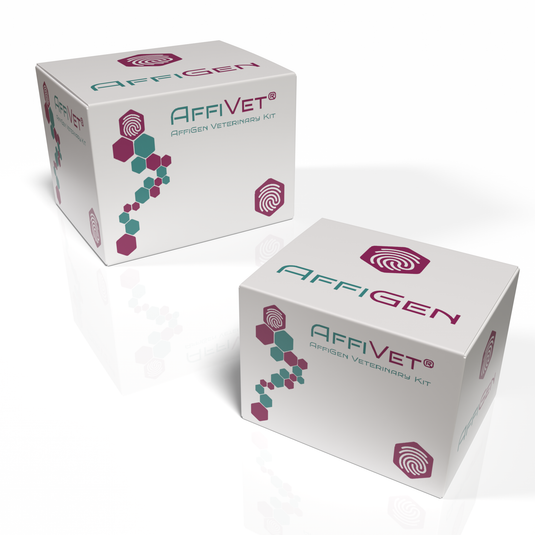Canine Distemper Virus(CDV) antigen rapid test card
1. Product Usage
Canine distemper (CDV) is a highly contagious disease that is highly contagious and has a mortality rate of up to 80%. Its causative agent is canine distemper virus, a single-stranded RNA virus. The natural host of the virus is canine and scorpion, mainly transmitted by air and droplets. This product is used to detect the infection of canine prion in dogs by immunochromatographic test on secretion samples of canine conjunctiva, nasal cavity and saliva, as an auxiliary diagnosis of canine distemper virus infection. The test results are for reference only.
2. Principle
This product uses rapid immunochromatography to detect CDV antigen. After the diluted sample is added to the “S” hole on test card, if the CDV antigen is present in the sample, the antigen will specifically bind to the colloidal gold-labeled CDV monoclonal antibody, and the complex will move along the chromatographic membrane and be chromatographed. The pre-coated CDV monoclonal antibody on the membrane is captured, and a wine red detection line is formed at the T-position of the cartridge. If there is no CDV antigen in the sample, no visible lines will be formed at the T line. In addition, the system has also designed a C-line for verifying that the test is valid—whether negative or positive, the line should be colored, otherwise it will be invalid.
3. Components
1)CDV Ag Test Card ( Including 1 CDV Ag test cassette, 1 dropper, 1 desiccant) 10 pieces
2) Sample buffer 10 tubes
3) Swab 10 pieces
4) Instruction 1 piece
4. Test Procedure
1) Read the manual carefully and return the test card, sample into room temperature 15~25℃before use.
2) Sample collection: use a cotton swab to gently collect secretions from the conjunctiva, nasal cavity or oral cavity of the animal's eye. Immediately insert the cotton swab with secretions into the tube containing the sample buffer, and mix the solution to dissolve the sample as much as possible. Considering the uncertainty of the detoxification site of the animal, it is recommended to collect samples from multiple sites during clinical testing, and mix the liquid in the sample buffer to prevent missed detection.
3) Open the package, take out test card, put it on desk flatly.
4) Use the supplied dropper to absorb the diluted sample, drop 3~4 drops (about 100ul) into “S” hole on test card.
5) Read the result in 5~10min, result is invalid beyond 15 min.
5. Result judgment
1) Positive(+): Both on T Line and C line being seen wine-red color reaction, it means there is CDV antigen in the sample.
2) Negative(-): no color reaction on Test Line (T Line),only on Control Line(C Line) being seen wine-red color reaction, it means there is no CDV antigen in the sample.
3) Invalid(X): No color reaction on C Line, it means the operation is wrong or the test card is invalid, test again.
 6. Specifications, Storage and Stability.
6. Specifications, Storage and Stability.
Package: 10T/box
Store at 4~30℃ in a cool, dark and dry place,no frozen. Shelf life: 18 months.
7. Precautions
1) Please use the test card within the shelf life and within 1 hour after opening.
2) Avoid direct sunlight and direct fan blowing during testing.
3) Try not to touch the white film surface of the non-plastic part of the test card.
4) Sample droppers should not be mixed to avoid cross contamination.
5) Do not use sample buffer that are not supplied with this reagent.
6) The used test card should be treated as microbiological dangerous goods.
8.Application limitations
This product is an immunological diagnostic kit, which is only used to provide qualitative test results for clinical testing of pet diseases. If there is any doubt about the test results, please use other methods of diagnosis (such as RT-PCR, Western-blot, etc.) to further analyze the samples. For pathological analysis, please consult your local pet physician.

